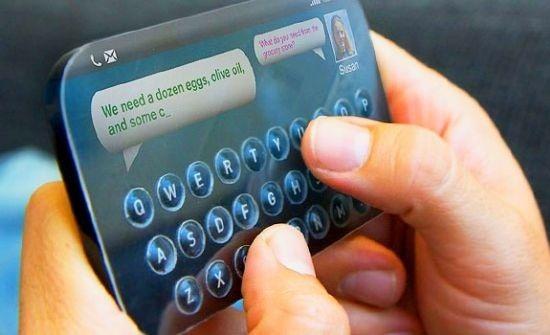
When it comes to moving forward with technology, touchscreens seem to be the only way to push ahead (as we can see with examples like BlackBerry). While typing on my various touchscreen devices, I do experience those times when I miss the satisfying ‘click’ a button would make when pushing down on a physical key - especially on my Kindle Fire HD, which happens to lack even the most basic function of haptic feedback, come to find out. While I sometimes do miss typing on an actual physical keyboard, I probably wouldn’t choose to go back to having a larger, bulkier phone in order to have the luxury of that feature again. However, with the arrival of this new technology developed by Tactus Technology I might not have to.
Based in Fremont, California, Tactus Technology has produced a new type of touchscreen that is unlike any you’ve ever seen before. By using special microfluidic technology, this company has created a screen that serves as both a touchscreen and a physical keyboard. It looks like a pretty solid feature for people who may be iffy about switching to a device that is touchscreen only, or for people like me who sometimes just miss pressing physical buttons.
How this new touchscreen works is that, when prompted with a corresponding command, an actual physical keyboard will rise from the touchscreen. When you’re done, the keyboard sinks back into the touchscreen and your device returns to a normal run-of-the-mill looking gadget. The keyboard is described as feeling like a legit keyboard – you have to physically push the buttons down and tap the letter underneath in order for it to register through the device.
Although in its current state the buttons are premeditated, the prediction for the future is to be able to use this technology for more than just a QWERTY keyboard; you may be able to customize the buttons to pop up wherever you want them to. This could be extremely useful for the future of smartphone gaming in regards to more responsive controls; or to substitute the absent physical camera button that some phones and tablets are missing. Better yet, I imagine this technology can be honed on to work with those who are blind and possibly make braille on a touchscreen possible. Getting to this point would certainly take more time to develop on; regardless, this is definitely a great stepping stone for this type of technology.
When I first heard about the microfluidic touchscreen I didn’t think I’d be that impressed. However, after watching the demo and seeing that it is both functional and dynamic, I have to say I’m thoroughly impressed and extremely interested (and still a little surprised from the first time I saw how quickly the bubble buttons appear and disappear). Although I’ve pretty much completely adapted to typing on a flat touchscreen, I’d still be interested in trying one out for myself. It’s amazing how the buttons seem to appear and disappear like magic.
While I am impressed by this technology, as with any new technology we’ll just have to see how well the public receives it once it’s released. Will the nostalgia of having physical buttons be quenched with these bubbly buttons, or will it be too bizarre for people to take to it at this point in time?
Readers, what do you think about this futuristic design? Does it appeal to you, or have you grown so accustomed to touchscreen keyboards that it would make no difference to you? Let me know your thoughts in the comments!